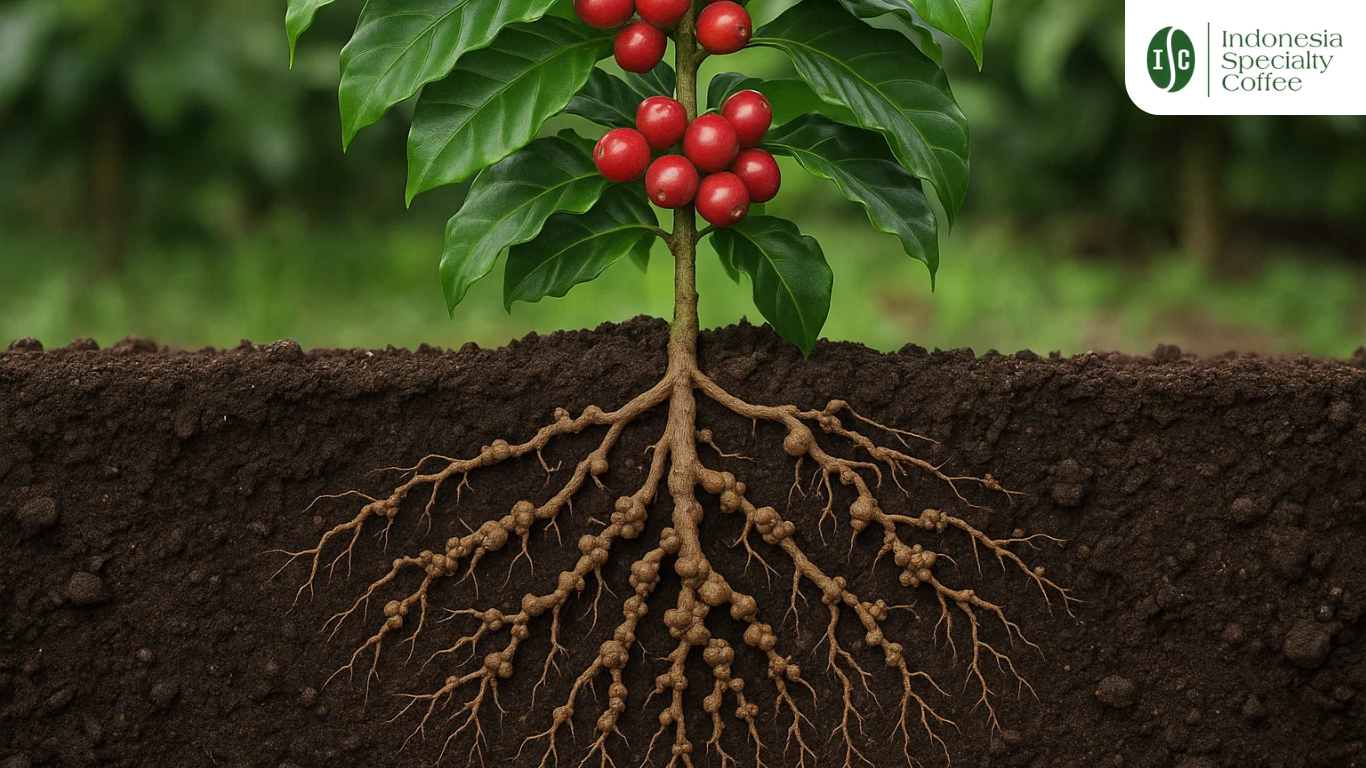Imagine starting your day with a perfect cup of coffee. It tastes smooth, rich, and comforting. Now picture this: hidden in the roots of the very tree that produced those beans, root-knot nematodes in coffee are silently draining its life. These microscopic parasites are among the most dangerous pests in coffee agriculture—and most people have never heard of them.
For farmers, the damage is devastating. For coffee lovers, it’s invisible but real: lower yields, rising prices, and fading flavor. Understanding these soil parasites is essential to saving both your brew and the future of sustainable coffee.
What Are Root-Knot Nematodes in Coffee?
Root-knot nematodes (Meloidogyne spp.) are microscopic worms that infect the roots of coffee plants. Once inside, they form galls (knots) that block the flow of nutrients and water. Over time, this leads to stunted growth, poor cherry development, and increased vulnerability to other diseases.
These nematodes are especially dangerous because:
- They cause long-term yield loss
- They are hard to detect with the naked eye
- They’re often misidentified, leading to poor management
Need to understand the full impact on flavor? Read about how Sumatra coffee reflects plant health.
How Root-Knot Nematodes Damage Coffee Roots
When nematodes invade, they create small knots that interrupt a tree’s foundation.
Here’s what happens:
- Galls form on roots, blocking nutrient uptake
- Leaves yellow, growth slows
- Beans become smaller, lower in quality
- Other pathogens like fungi attack weakened trees
- Farmers suffer both visible and hidden losses
This slow breakdown often goes unnoticed until it’s too late—making it one of coffee’s most underestimated threats.
Want your coffee to stay fresh and flavorful? Start with healthy roots and proper coffee storage methods.
How to Identify Root-Knot Nematodes in Coffee

Coffee roots parasitized by Meloidogyne exigua. Source
For decades, researchers used morphology—the shape of female nematodes and their perineal patterns—to identify species. But this method is complex and unreliable for certain types.
Today, better tools include:
- Esterase phenotyping: Enzyme-based identification
- SCAR-PCR markers: DNA testing for accurate species detection
- Multiplex PCR: Identifies multiple species in one test
These modern tools are helping growers detect species like M. incognita, M. exigua، و M. paranaensis more reliably—especially in Latin America and Africa.
Looking for expert bean selection? Here’s how to choose quality Aceh Gayo green coffee beans.
Managing Nematodes with Sustainable Coffee Practices
Complete eradication is unlikely, but effective management can make a big difference.
Here’s how farmers are protecting their crops:
- Agroforestry: Shade trees balance soil ecology
- Organic matter: Compost improves microbial resistance
- Resistant cultivars: Some Arabica varieties tolerate nematode pressure
- Biological control: Fungi and bacteria that kill nematodes
- Crop rotation: Disrupts nematode reproduction cycles
This mirrors strategies discussed in intercropping systems for coffee, which are both eco-friendly and effective.
Why It Matters: From Coffee Roots to Consumer Cups
Root-knot nematodes in coffee may be hidden, but their effects are everywhere. From the soil to your cup, they influence price, flavor, and the livelihood of farmers. Supporting sustainable practices helps protect what we all value—high-quality, ethically grown coffee.
You can make a difference by:
- Buying from farms that use sustainable nematode management
- Choosing beans grown under agroforestry systems
- Supporting producers committed to eco-friendly agriculture
Want to find trusted bean sources? Here’s where to find reliable coffee suppliers.
What’s Lurking Under the Coffee Tree?
Root-knot nematodes may be invisible, but their impact is not. With the right awareness and practices, we can protect coffee plants—and the people who grow them—for generations to come.
☕ Next time you sip your brew, think about this: What unseen battles were fought to bring this flavor to your lips?

